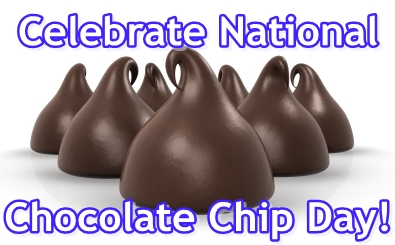Donuts – Those warm gooey fried rings of dough covered with sugar or sprinkles and filled with custard or jelly. While you don’t really need an excuse to eat a few (or a few dozen), it’s always a nice treat to have one! – On Friday, June 1st you will have the perfect reason, for it’s National Donut Day! This great holiday got us thinking…how much do we actually know about the poignant, patriotic history of our favorite fried food product?
Many are shocked to learn that donuts have been around for hundreds of years! Archaeologists have turned up several fossilized fried cakes with holes in the center in prehistoric ruins in the Southwestern United States. How these early Native Americans prepared their donuts is still unknown.
Most historians talk about donut history as starting in the mid-19th century, when the Dutch wrote down their recipes for “olykoeks,” or “oily cakes,” which were balls of sweet dough fried in pork fat, with apples, prunes or raisins in the middle. Soon after, the Pilgrims brought the tasty snack with them to America. There was just one little problem with donuts back then – when the olykoeks were pulled out of the hot oil, the centers were hardly ever cooked through.
So how did donuts get their modern-day name? There’s a story about a woman from New England, Elizabeth Gregory, who was known for her yummy olykoeks. Her secret was to add a hint of nutmeg and fill the center with hazelnuts or walnuts. She even had a special name for her creation, “dough-nuts.” (She may have gotten the idea for the name from an instruction in the recipe, which said to make “little nuts of dough” and place them into the hot oil.)
And how did donuts get the whole in the center? Well, the story of Elizabeth Gregory continues, though there are a few different endings. In one, she gives her son – a sea captain – some dough-nuts to take with him on one of his ocean journeys. But when a storm started at sea, the captain found himself having a hard time holding the treat and steering the ship. So he impaled the dough-nut on one of the steering wheel’s spokes, creating a hole in the middle of it.
Another version of the story says the captain simply didn’t like the nuts his mother put in the center of the dough-nuts, so he poked them out, leaving an empty whole in the middle. Whatever the real story is, there were benefits to making doughnuts with holes. They cooked more evenly and their unique shape made them extremely popular. During World War I, donuts achieved the ultimate food status as an American favorite. Young American men fighting oversees were served donuts as a reminder of the food back home.
Since 1938, every first Friday in June is designated as National Doughnut Day! Contrary to popular belief, this American ‘holiday’ is not a marketing ploy by the big donut companies, but a tradition that dates all the way back to the Great Depression. National Doughnut Day was created by the Salvation Army to honor the women who served doughnuts to soldiers during World War I.
Over the decades, National Doughnut Day has become a revered tradition in the USA. Each year, millions of Americans celebrate the occasion by chowing down on the nation’s top-selling baked dessert. With over 10 billion sold each year, the doughnut is second only to bread in total baked good sales nationwide. Donut shops such as Dunkin Donuts, Krispy Kreme & even some of the small neighborhood shops, give away free donuts on this fun holiday!
While donuts may be an American tradition, many countries around the world have a donut-like incarnation that they enjoy. In the horn of Africa (Sudan, Ethiopia, Somalia, and Eritrea ), the ball-shaped Lagayamats are fried and covered with powdered sugar, while the Tunisian Yo-Yo’s, are smothered in honey or even sesame seeds. India has a savory version called Vada, while Indonesians make their Donut Kentang with mashed potatoes and flour and, . . . . . . . the list goes on and on. The bottom line is, no matter where you live, you will be able to celebrate this holiday!
If you are one of the minority that simply don’t like donuts, you can still get into the spirit with charity – sell donuts to your friends and neighbors and donate the proceeds to your local Salvation Army. After all, it’s thanks to their ingenious idea that we have this yummy holiday!
Whether it’s powdered, jelly-filled, or frosted, this classic treat is always delicious, making National Donut Day a great reason to celebrate. You can share the excitement of this unique holiday with friends and family with a Free Donut Day eCard!





